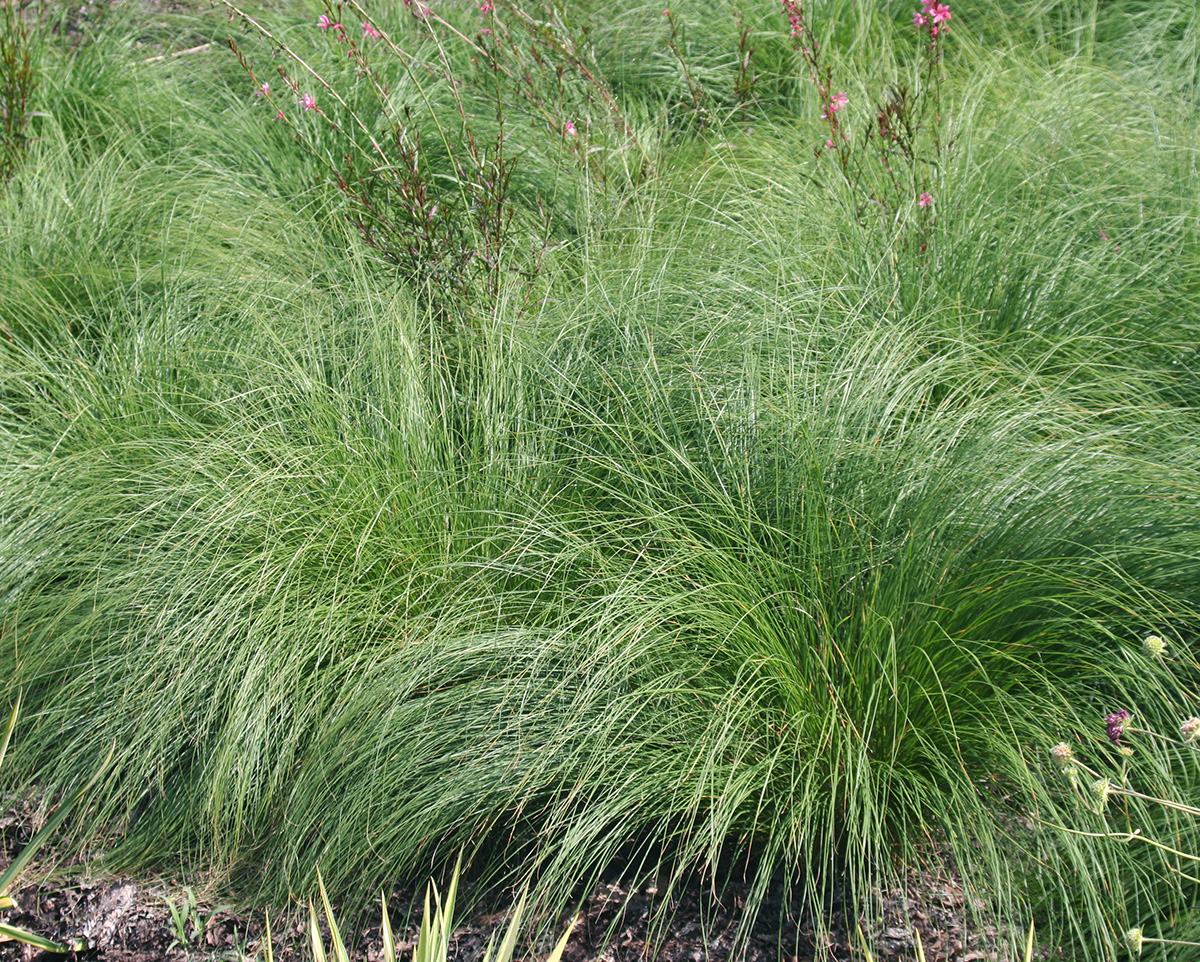
Overview of Prairie Dropseed
Prairie dropseed, Sporobolus heterolepis, is a warm season grass native to the tallgrass and mixed grass prairies of central North America that is also a popular low-maintenance ornamental landscape plant in hardiness zones 3 to 9. Found mainly on the Great Plains from Texas north to southern Saskatchewan, this long-lived perennial clump-forming grass also occurs less commonly in certain habitats in scattered pockets in the eastern Midwest and Northeast to Quebec. It is native to about the southern half of Wisconsin. It was named a Plant of Merit by the Missouri Botanical Garden in 2005 and was selected as the Wisconsin Nursery and Landscape Association’s Herbaceous Perennial of the Year in 2018.
Plants grow 2-3 feet tall and wide from a fibrous root mass, forming an arching, fountain-like mound of foliage with a fine texture. The smooth, medium green, linear leaves are very narrow and either flat or rolled. In fall, the dense tufts of foliage turn an attractive golden bronze, often with orange or copper highlights, and resists flattening by snow so this plant provides winter interest if not cut back until spring.
In mid- to late summer, small pink and brown-tinted flowers are produced in airy, 3-8 inch long flower heads with a narrowly pyramidal silhouette. One or more stout but slender culms develop from the center of each leafy clump. The wiry, open branching panicles terminating in individual spikelets are held well above the foliage and add movement in the garden.
The wind-pollinated spikelets are highly unusual for a grass, having a fragrance variously described as vaguely reminiscent of coriander, licorice, popcorn or sunflower seeds. The florets are followed by small, smooth, hardened rounded seeds (technically an achene, a type of fruit, rather than the more normal caryopsis or grain that most grasses produce) within tan hulls, which drop to the ground when mature – hence the common name of dropseed. Birds such as sparrows and juncos, and other animals, feed on the seeds; Native Americans ground the seed to make flour. Although it does produce seed, it generally does not self-sow freely in gardens.
General Care of Prairie Dropseed
Grow prairie dropseed in full sun in most types of well-drained soil. Although it prefers dry, rocky soils it does fine in heavy clay. It tolerates both drought and occasional periods of saturated soil, so it can be used on the upper edges of rain gardens where it doesn’t remain too wet. It has no serious pest problems, is not favored by deer (although it may be grazed), and is tolerant of juglone so it can thrive around black walnuts. Once established, it needs little care other than pulling, cutting, or burning the old foliage off in late winter or early spring before new growth begins.
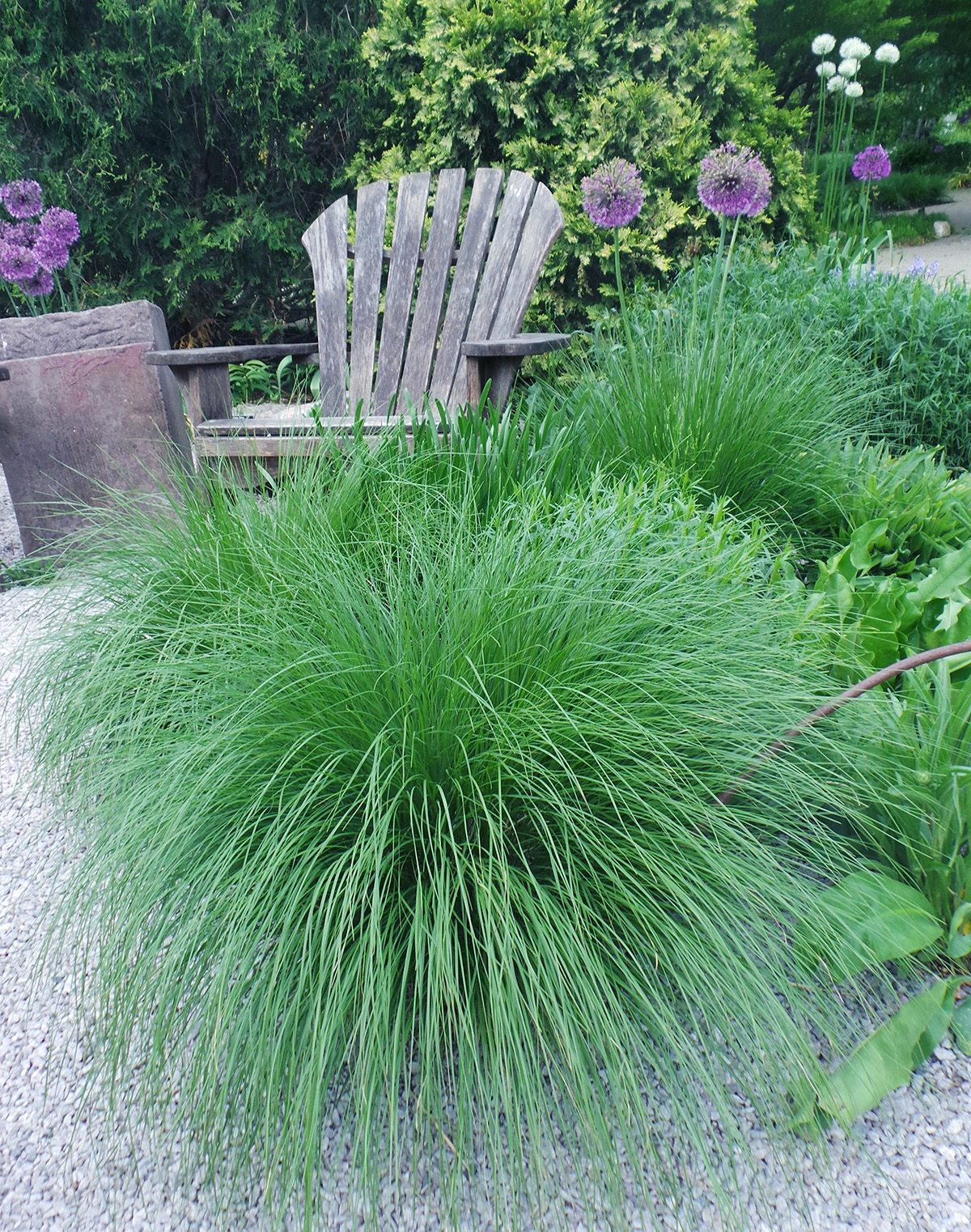
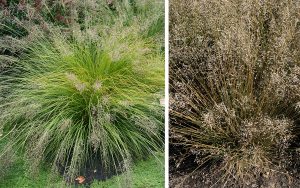
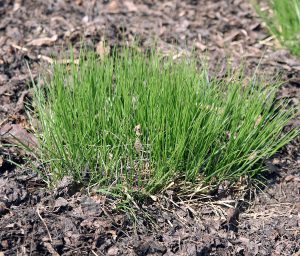
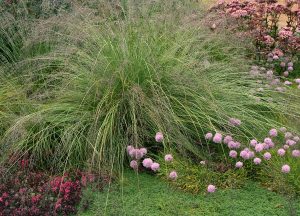
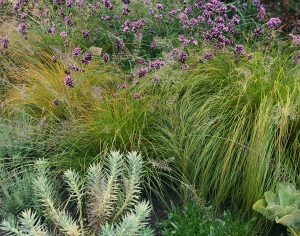
Landscape Use
Use prairie dropseed in perennial or mixed borders, naturalistic plantings, meadows, and restored prairies and roadside revegetation. It is a good addition to rain gardens and aids in erosion control. The fine, flowing appearance is a good contrast to plants with bold foliage or upright form. Prairie dropseed makes a great filler between herbaceous perennials, especially those native to prairies, such as purple coneflower (Echinacea purpurea), small goldenrods, liatris, black-eyed Susan (Rudbeckia fulgida var. fulgida), and butterfly weed (Asclepias tuberosa). It can be used as a tall groundcover when mass planted and can be used to create a distinctive border plantings. It can also be used as an accent specimen plant. It is particularly nice when positioned so the flower and seed heads are backlit.
In its native habitats it is commonly associated with little bluestem (Schizachyrium scoparium), big bluestem (Andropogon gerardii var. gerardii), grama grasses (Bouteloua spp.), panic grass (Panicum spp.), Indiangrass (Sorghastrum nutans), leadplant (Amorpha canescens), green milkweed (Asclepias viridiflora), coreopsis (Coreopsis spp.), purple sorrel (Oxalis violacea), phlox (Phlox spp.), and yellow cone flower (Ratibida pinnata) among other plants.
Propagating Prairie Dropseed
Although prairie dropseed can be grown from seed, it is slow growing, taking about four years to reach blooming size and so it is often started from plugs (in prairie restoration) or divisions (in gardens). If growing from seed, sow indoors in spring about 10-12 weeks before the last expected spring frost. Divisions, taken in spring once growth resumes, can take a long time to establish but clumps rarely require dividing and are very dense and difficult to divide. Generally only the species is available. However, plantsman Roy Diblik of Northwind Perennial Farms in Burlington, WI discovered a dwarf selection in 1994 in the Kettle Moraine area and introduced it as the cultivar ‘Tara’.
– Susan Mahr, University of Wisconsin – Madison
Last Update: Bruce Spangenberg, UW-Madison Extension, 2025
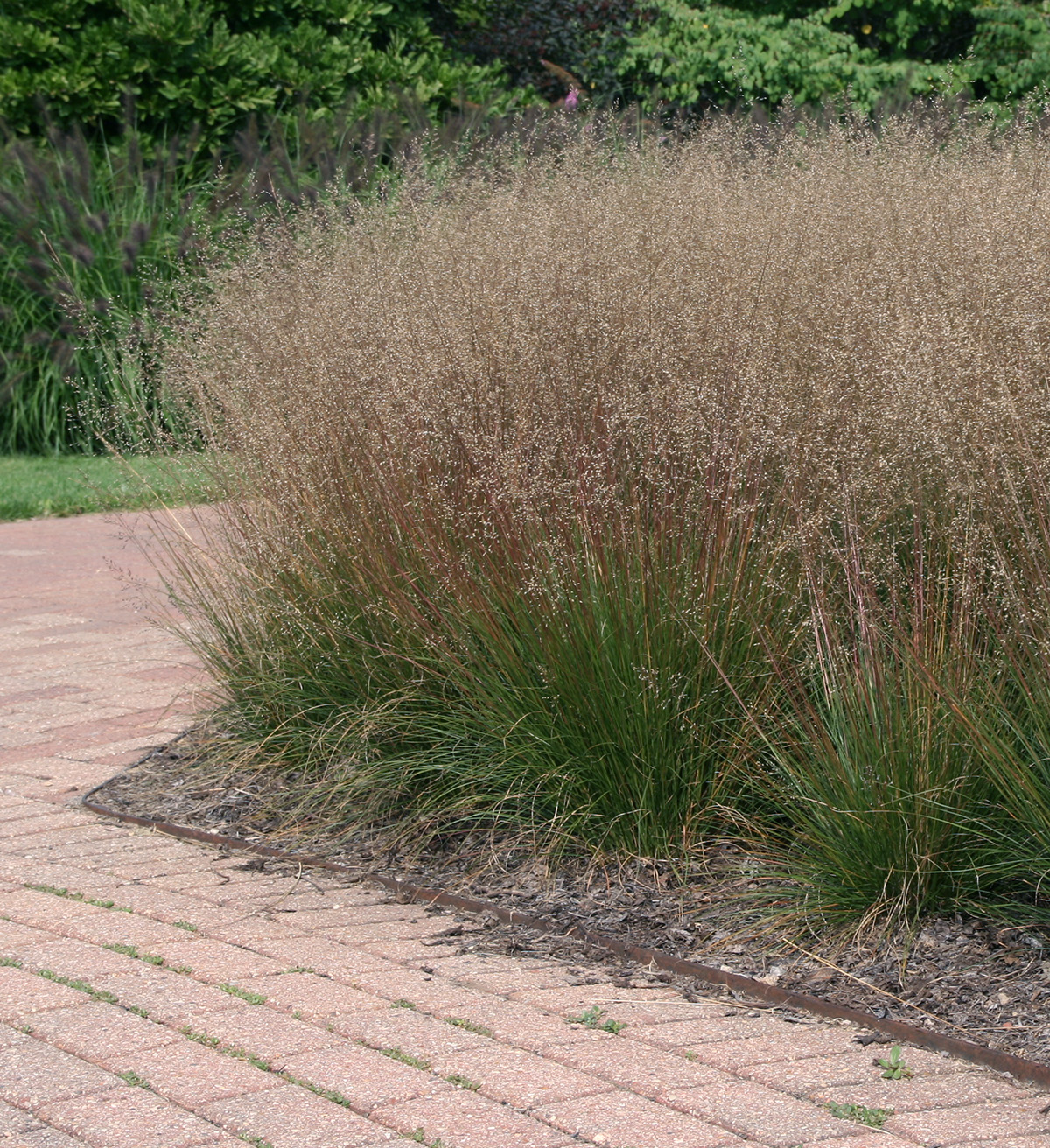





 Aster, Symphyotrichum spp.
Aster, Symphyotrichum spp. Fascinating Fasciation
Fascinating Fasciation Alternatives to Lawn: Groundcovers
Alternatives to Lawn: Groundcovers Marigolds
Marigolds


